18 Curious Civil War-Era Recipes We Still Eat Today

Explore how some of the dishes that nourished soldiers and families during the Civil War have transcended time to become cherished staples in modern kitchens. These recipes, born from necessity and creativity, highlight the resourcefulness of the era, and their enduring appeal speaks to their deliciousness and versatility.
1. Cornbread

Cornbread has long been a Southern staple, enjoyed for its versatility and cost-effectiveness. Cornmeal, the primary ingredient, was easily accessible during the Civil War, making cornbread a practical choice for soldiers and families alike.
Today, it’s a beloved accompaniment served alongside chili or barbecue, embodying comfort and warmth. The recipe has remained relatively unchanged, relying on simple ingredients like cornmeal, flour, milk, and eggs to create its iconic texture and flavor.
Modern variations may include add-ins like cheese or jalapeños, but the essence of cornbread remains a delicious connection to its historic roots.
2. Johnnycakes
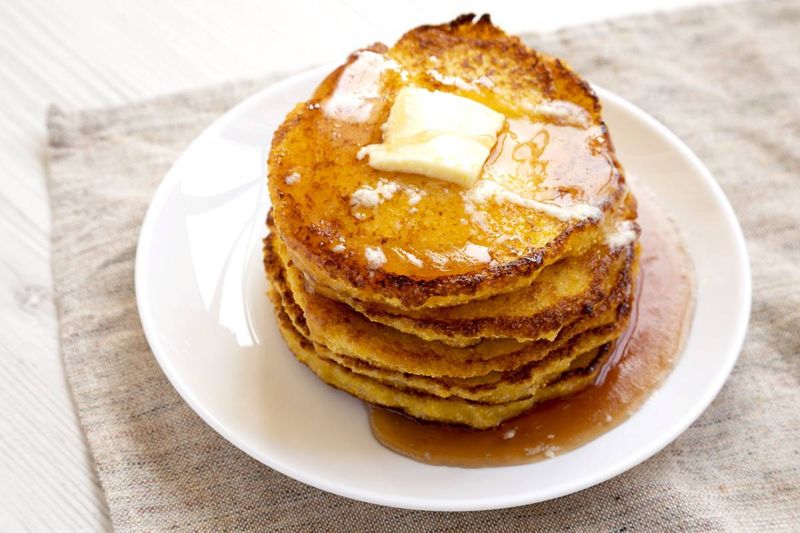
Johnnycakes, also known as journey cakes, are flat cornmeal pancakes traditionally cooked on a hot griddle. Originating as a simple, portable meal for travelers, these delights have evolved but retained their core simplicity.
In the Civil War era, johnnycakes were popular among soldiers due to their easy preparation and filling nature. Today, they are often served fluffier, with accompaniments like butter and syrup, but the fundamentals remain the same.
Whether enjoyed at breakfast or as a savory side, johnnycakes offer a taste of history with every bite, celebrating the resilience and ingenuity of the past.
3. Apple Butter

Apple butter’s rich, spiced flavor made it a popular way to preserve the bounty of apples long before refrigeration. It was a common sight during the Civil War, serving as both a sweet spread and a way to add flavor to otherwise bland meals.
Today, apple butter is enjoyed as a comforting spread on toast, biscuits, or paired with cheese. Its creation involves slow-cooking apples with sugar and spices until they reach a smooth, buttery consistency.
The tradition of making apple butter at home continues, often passed down through generations, preserving the delicious legacy of this simple yet flavorful creation.
4. Chicken and Dumplings
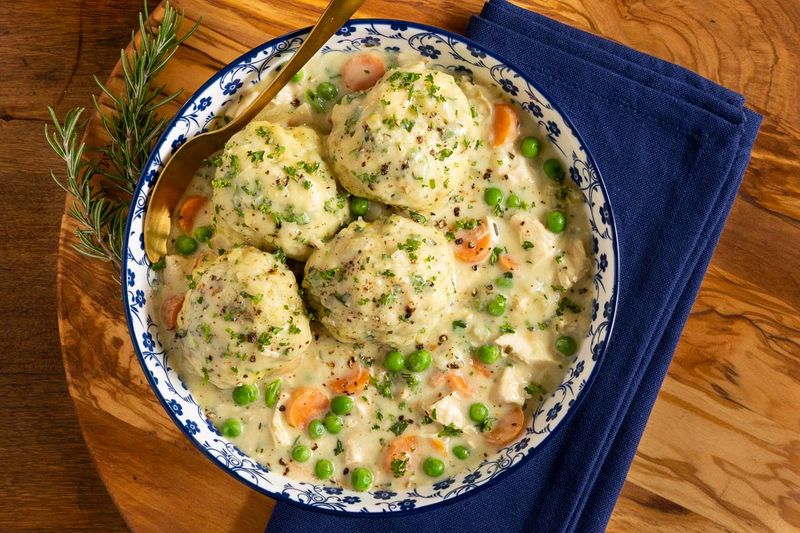
Chicken and dumplings offer a warm embrace on cold nights, born out of necessity during the Civil War when every scrap of food was precious. This dish combined basic dough and leftover chicken to create a nourishing meal.
Today’s versions often feature a creamy broth with vegetables, but the heart of the recipe remains unchanged. The dumplings provide a hearty texture, while the chicken adds flavor and sustenance.
Loved for its comforting qualities, chicken and dumplings is a testament to the resourcefulness of past generations, turning simplicity into culinary delight that continues to soothe souls.
5. Biscuits and Gravy
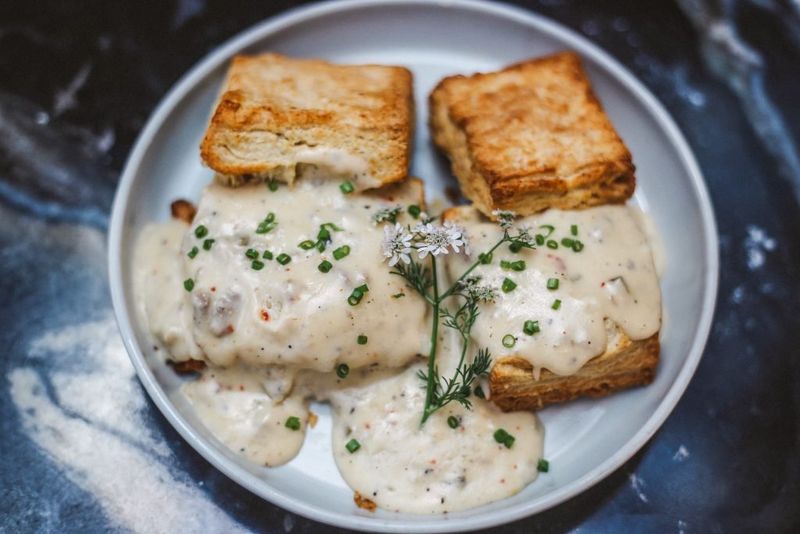
Biscuits and gravy, synonymous with Southern comfort food, have their roots deeply embedded in the Civil War era. Soldiers often crafted primitive versions using flour, lard, and milk, the staples of their diet.
Today, the dish is far more indulgent, featuring flaky biscuits and a rich, savory sausage gravy. The transformation from necessity to indulgence highlights the evolution of taste while retaining the essence of its origins.
As a beloved breakfast or brunch option, biscuits and gravy offer a taste of history, reminding us of the creativity that arose from times of hardship.
6. Hardtack (Modernized as Crackers or Flatbreads)

Originally, hardtack was a long-lasting, durable bread used as a survival food by soldiers. Made from flour, water, and salt, it was notoriously hard and often inedible without softening.
Today, the concept has evolved into more palatable forms like crackers and flatbreads, enjoyed for their crisp texture and flavor. These modern versions are far from the teeth-breaking hardtack of the past, often seasoned with herbs or seeds.
While the need for such durability has diminished, the transformation into a culinary delight highlights how even the most basic foods can inspire gourmet creations.
7. Molasses Cookies
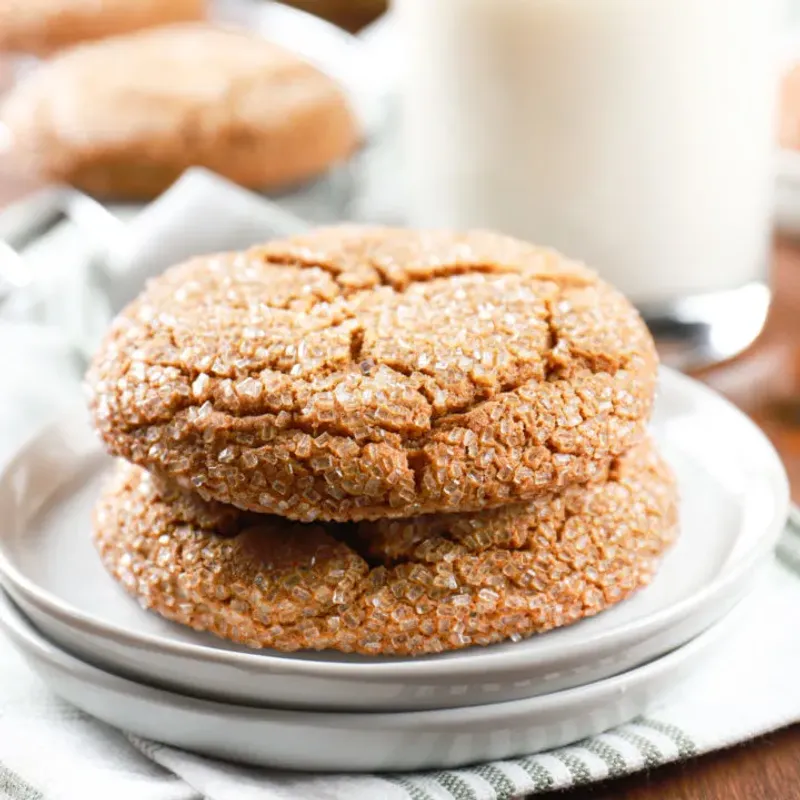
During the Civil War, sugar was often scarce, leading to the popularity of molasses as a sweetener. Molasses cookies, with their rich, spiced flavor, became a comforting treat amidst the hardships of war.
These cookies remain a timeless favorite, known for their chewy texture and warm spices like cinnamon and ginger. The deep, robust flavor of molasses adds a nostalgic sweetness that transports one back to simpler times.
Baking molasses cookies today connects us to the past, offering a taste of history with every bite, and showcasing the resilience in creating joy from limited resources.
8. Hoppin’ John

Hoppin’ John is a dish steeped in Southern tradition, with roots stretching back to the Civil War era. A mix of black-eyed peas, rice, and pork, it symbolized hope and prosperity.
Traditionally served on New Year’s Day, the dish was thought to bring good luck for the coming year. It’s a flavorful medley that has transcended its humble beginnings to become a cherished staple.
The blend of textures and flavors in Hoppin’ John reflects the ingenuity of its creators, offering a hearty, satisfying meal that celebrates resilience and culinary heritage.
9. Grits

Grits, a simple yet satisfying dish, were a staple during the Civil War due to their affordability and nourishing qualities. Made from ground corn, grits provided much-needed sustenance to soldiers and civilians alike.
Today, grits have gone beyond their humble origins, often elevated with additions like cheese, butter, or shrimp. They remain a beloved Southern dish, celebrated for their comforting texture and versatility.
As a breakfast favorite or a side dish, grits continue to bridge the past and present, highlighting the enduring appeal of this classic comfort food, rooted in history.
10. Fried Apples

Fried apples offer simplicity and sweetness, capturing the essence of comfort. During the Civil War, they provided a way to enjoy fresh fruit with minimal ingredients.
Cooked with butter, sugar, and cinnamon, fried apples became a favorite side dish or dessert, bringing warmth to the dining table. Their ease of preparation and delightful taste made them a popular choice.
Today, they continue to charm palates with their tender texture and rich flavor, serving as a reminder of how simple ingredients can create something truly special and timeless.
11. Vinegar Pie
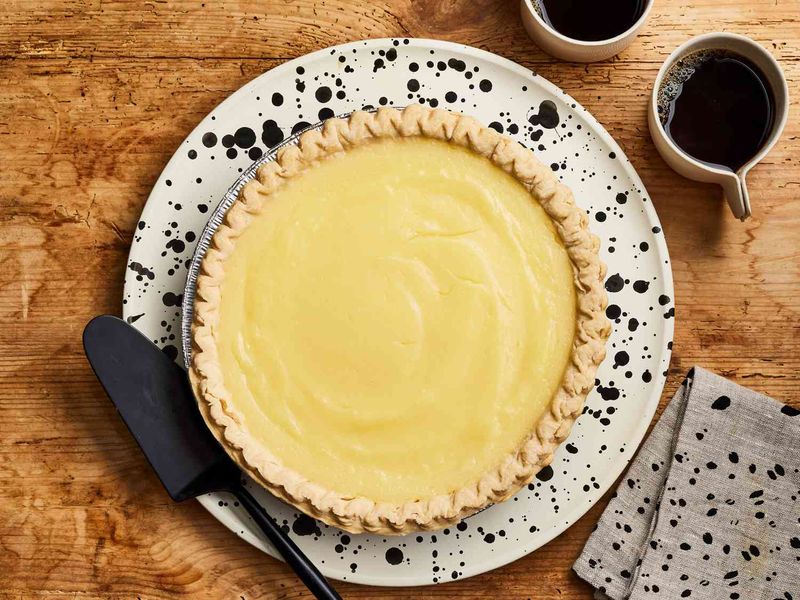
Vinegar pie is a testament to the ingenuity of cooks during the Civil War, who turned scarcity into creativity. With sugar in short supply, vinegar was used to mimic the tartness of lemons.
This quirky dessert has endured, offering a unique blend of sweet and tart flavors wrapped in a flaky crust. Some regions in the U.S. still embrace vinegar pie as a nostalgic treat.
The pie’s unusual ingredients and history make it a conversation starter, celebrating the ability to transform limitations into culinary innovation that defies expectations.
12. Shoofly Pie
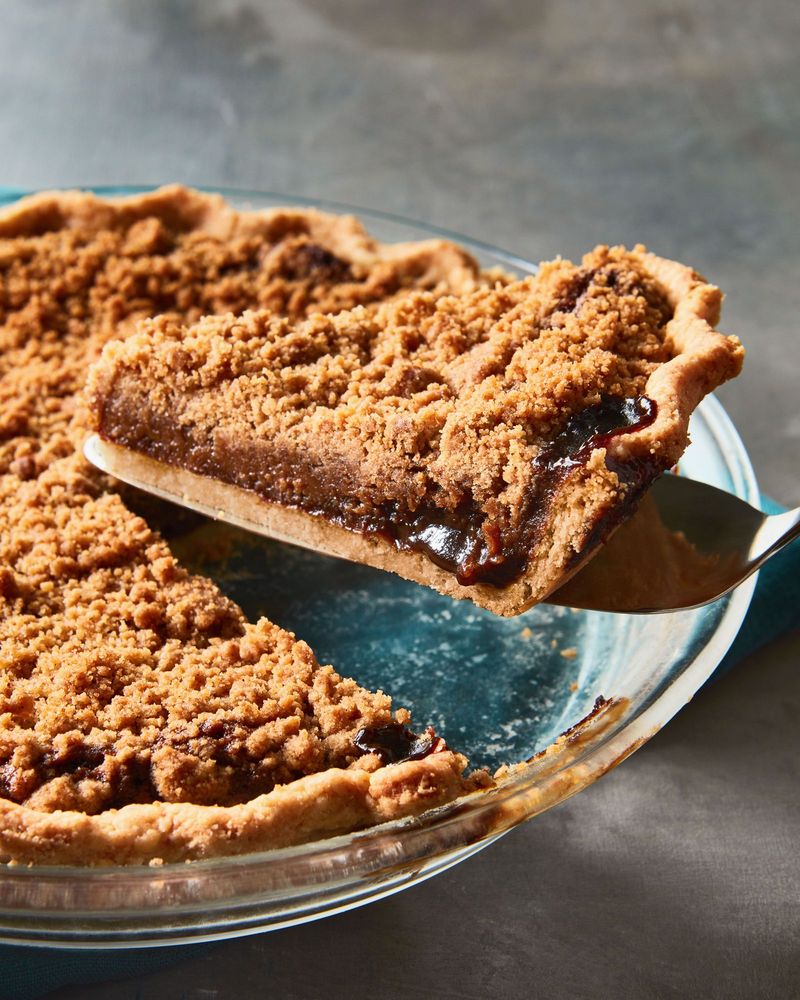
Shoofly pie, a Pennsylvania Dutch delight, emerged out of limited resources during the Civil War. Its main ingredients, molasses and brown sugar, were cheaper and more accessible than traditional sweeteners.
The pie’s rich, sticky filling and crumb topping create a symphony of textures and flavors, making it an enduring favorite. Its name, believed to come from the need to “shoo away” flies attracted to its sweetness, adds to its charm.
Today, shoofly pie continues to be enjoyed for its unique taste and historical significance, offering a slice of history with every bite.
13. Pickled Vegetables
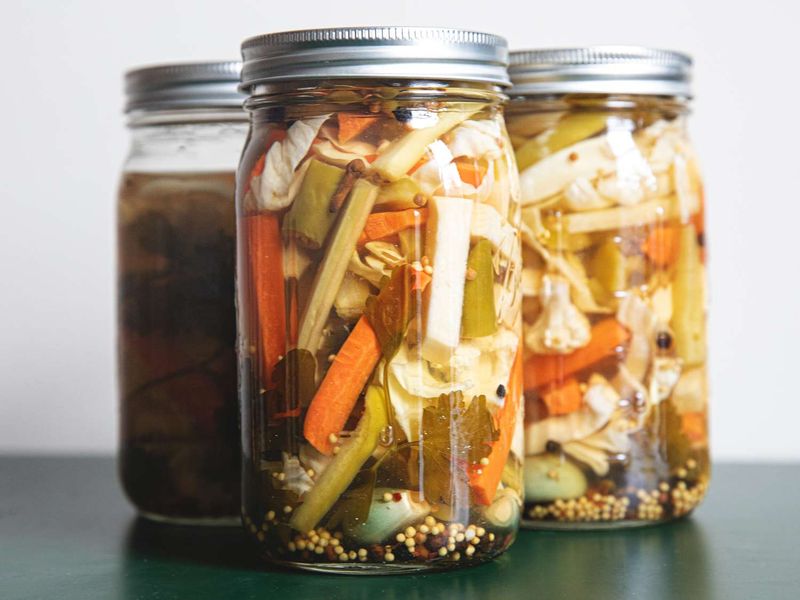
Pickled vegetables were a vital preservation method during the Civil War, allowing families to enjoy produce long after harvest. Soldiers and civilians relied on this technique to add flavor and nutrition to their diets.
Today, pickled vegetables like cucumbers, onions, and cabbage are staples on charcuterie boards and in Southern cuisine. The tangy, crisp flavors offer a delightful contrast to richer dishes.
The enduring popularity of pickled vegetables showcases the timeless appeal of this preservation method, transforming surplus produce into a vibrant, flavorful addition to meals.
14. Bean Soup

Bean soup, a humble yet hearty dish, was a common meal during the Civil War. Made with simple ingredients like beans, ham hocks, and vegetables, it provided much-needed nourishment.
Today, bean soup remains a comforting choice, often found in diners and home kitchens alike. Its rich, savory flavor and warming qualities make it a perennial favorite.
The tradition of bean soup, even served in Congress’s cafeteria, highlights how this comforting dish has stood the test of time, offering sustenance and flavor across generations.
15. Brunswick Stew
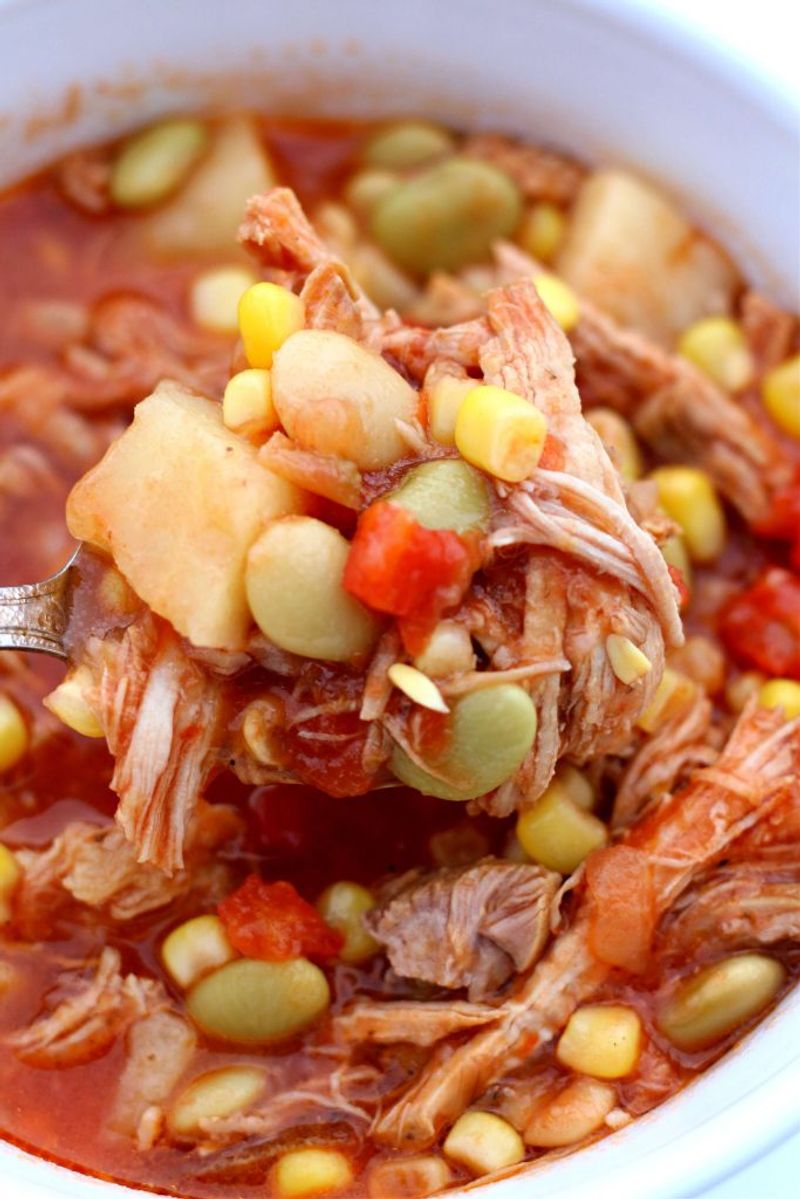
Brunswick stew, a thick, tomato-based concoction, has its roots in the Civil War era, where it was cooked over campfires. Originally made with whatever meat and vegetables were available, it offered a filling, nutritious meal.
Today, it’s a staple in Southern BBQ joints, often featuring chicken or pork alongside veggies like corn and lima beans. The rich, savory flavors meld together, creating a comforting dish.
Brunswick stew’s adaptability and heartiness have made it a beloved tradition, celebrating the resourcefulness and culinary creativity that emerged from challenging times.
16. Slapjack (Early Pancakes)

Slapjacks, the forerunners of modern pancakes, were a simple yet satisfying meal during the Civil War. Made from flour, water, and salt, they were cooked over open fires by soldiers and settlers alike.
Though basic, slapjacks provided a quick and filling meal, often served plain or with available toppings like syrup or berries. Over time, they evolved into the pancakes we know today, enriched with eggs and milk.
These early pancakes remind us of the ingenuity of those times, turning limited ingredients into a comforting meal that continues to be enjoyed.
17. Sweet Potato Pie
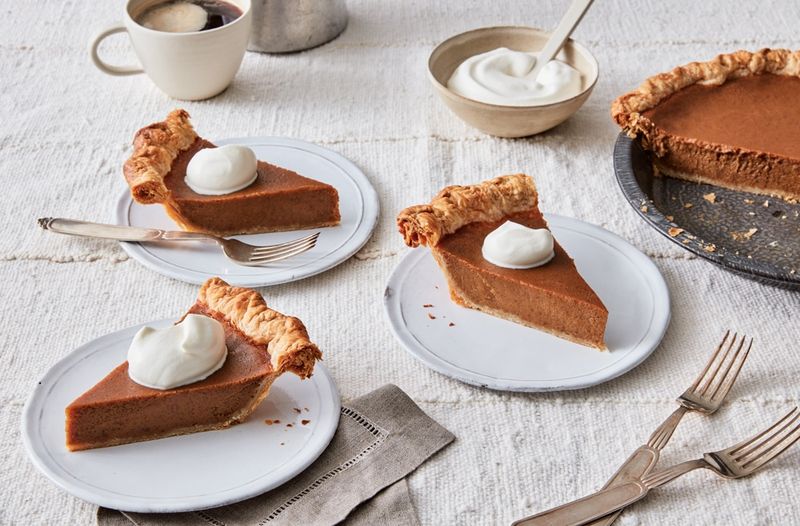
Sweet potato pie, a dessert rooted in Southern tradition, gained popularity during the Civil War when sweet potatoes were more accessible than pumpkins. Its creamy, spiced filling offers a comforting treat.
Today, sweet potato pie graces holiday tables across generations, celebrated for its rich flavors and smooth texture. Cinnamon, nutmeg, and vanilla enhance the natural sweetness of the potatoes.
The pie’s enduring appeal lies in its ability to evoke warmth and nostalgia, connecting us to a culinary heritage that has been passed down through the years, delighting palates anew.
18. Bread Pudding
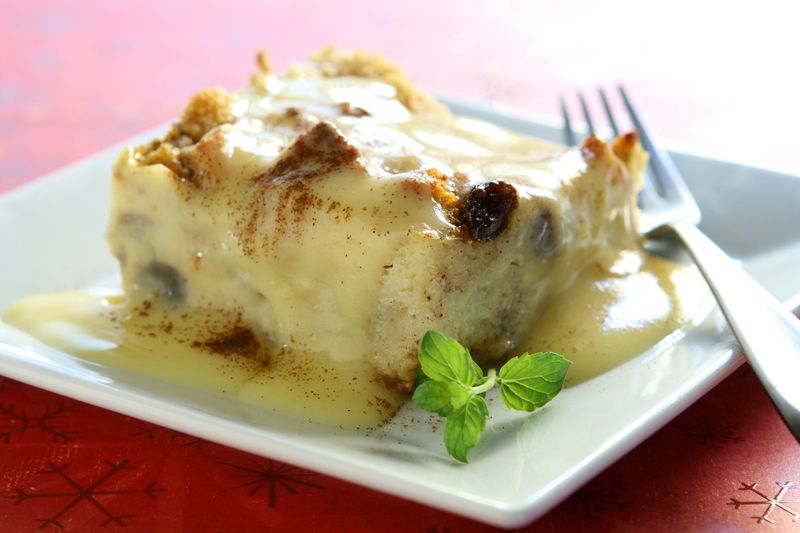
Bread pudding, the ultimate no-waste dessert, emerged during the Civil War as a way to use stale bread creatively. Mixed with milk, eggs, and sugar, it transformed into a comforting dish.
Today, bread pudding continues to be a favorite, often enriched with spices, fruits, or sauces. Its soft, custardy texture and sweet flavors make it a beloved comfort food.
This dessert’s ability to turn leftovers into something delightful exemplifies the resourcefulness of the past, offering a taste of history that remains cherished in modern kitchens.
